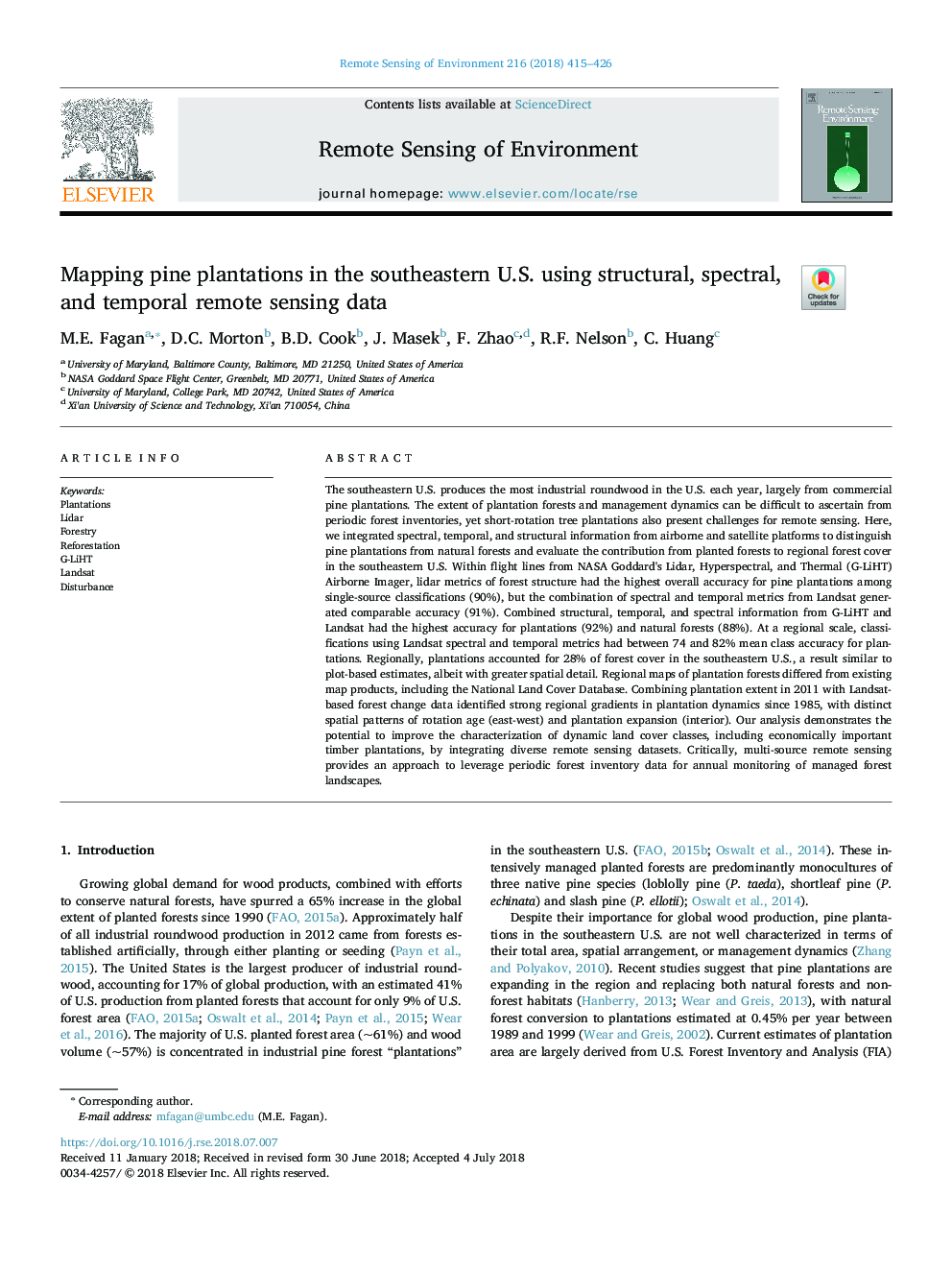| کد مقاله | کد نشریه | سال انتشار | مقاله انگلیسی | نسخه تمام متن |
|---|---|---|---|---|
| 8866426 | 1621184 | 2018 | 12 صفحه PDF | دانلود رایگان |
عنوان انگلیسی مقاله ISI
Mapping pine plantations in the southeastern U.S. using structural, spectral, and temporal remote sensing data
ترجمه فارسی عنوان
نقشه برداری کاشت کاج در جنوب شرقی ایالات متحده با استفاده از داده های سنجش از دور، ساختاری، طیفی و زمانی
دانلود مقاله + سفارش ترجمه
دانلود مقاله ISI انگلیسی
رایگان برای ایرانیان
کلمات کلیدی
موضوعات مرتبط
مهندسی و علوم پایه
علوم زمین و سیارات
کامپیوتر در علوم زمین
چکیده انگلیسی
The southeastern U.S. produces the most industrial roundwood in the U.S. each year, largely from commercial pine plantations. The extent of plantation forests and management dynamics can be difficult to ascertain from periodic forest inventories, yet short-rotation tree plantations also present challenges for remote sensing. Here, we integrated spectral, temporal, and structural information from airborne and satellite platforms to distinguish pine plantations from natural forests and evaluate the contribution from planted forests to regional forest cover in the southeastern U.S. Within flight lines from NASA Goddard's Lidar, Hyperspectral, and Thermal (G-LiHT) Airborne Imager, lidar metrics of forest structure had the highest overall accuracy for pine plantations among single-source classifications (90%), but the combination of spectral and temporal metrics from Landsat generated comparable accuracy (91%). Combined structural, temporal, and spectral information from G-LiHT and Landsat had the highest accuracy for plantations (92%) and natural forests (88%). At a regional scale, classifications using Landsat spectral and temporal metrics had between 74 and 82% mean class accuracy for plantations. Regionally, plantations accounted for 28% of forest cover in the southeastern U.S., a result similar to plot-based estimates, albeit with greater spatial detail. Regional maps of plantation forests differed from existing map products, including the National Land Cover Database. Combining plantation extent in 2011 with Landsat-based forest change data identified strong regional gradients in plantation dynamics since 1985, with distinct spatial patterns of rotation age (east-west) and plantation expansion (interior). Our analysis demonstrates the potential to improve the characterization of dynamic land cover classes, including economically important timber plantations, by integrating diverse remote sensing datasets. Critically, multi-source remote sensing provides an approach to leverage periodic forest inventory data for annual monitoring of managed forest landscapes.
ناشر
Database: Elsevier - ScienceDirect (ساینس دایرکت)
Journal: Remote Sensing of Environment - Volume 216, October 2018, Pages 415-426
Journal: Remote Sensing of Environment - Volume 216, October 2018, Pages 415-426
نویسندگان
M.E. Fagan, D.C. Morton, B.D. Cook, J. Masek, F. Zhao, R.F. Nelson, C. Huang,
